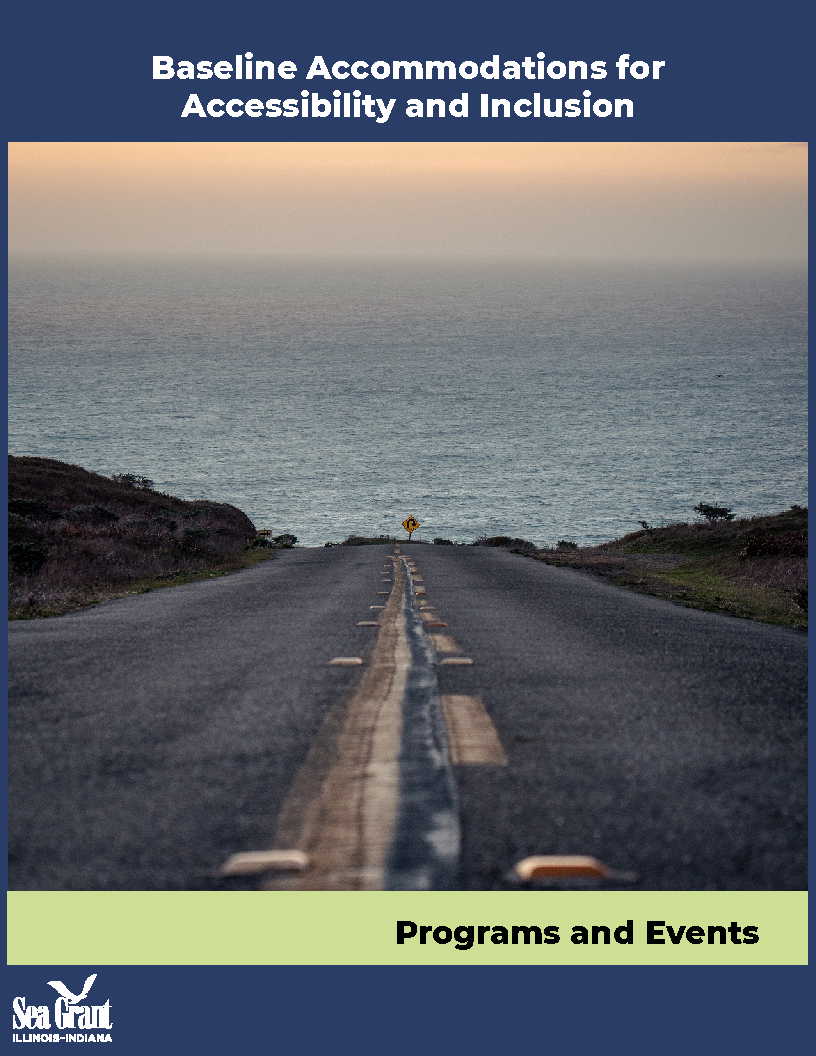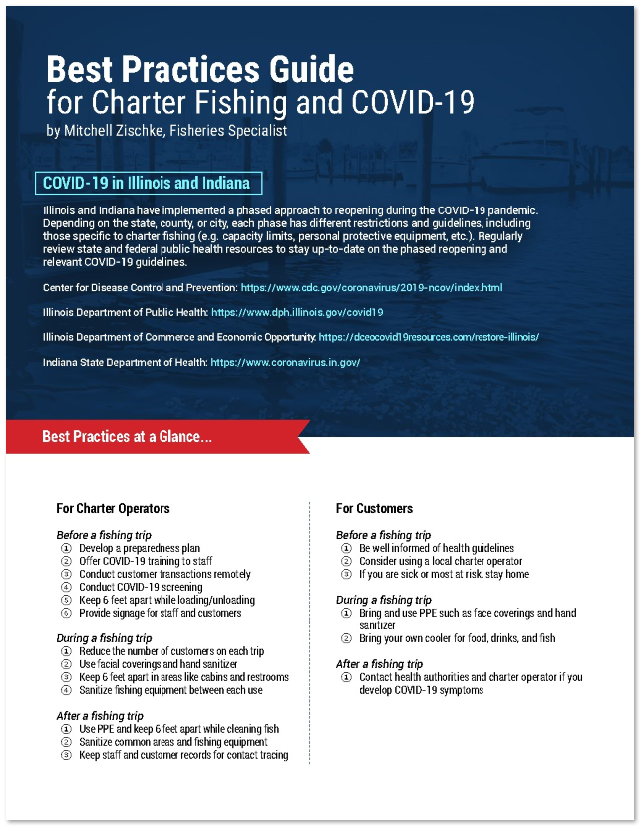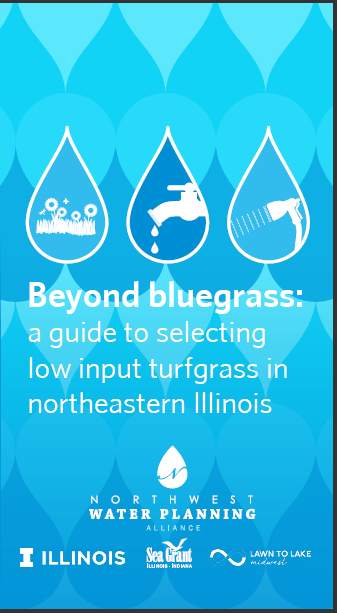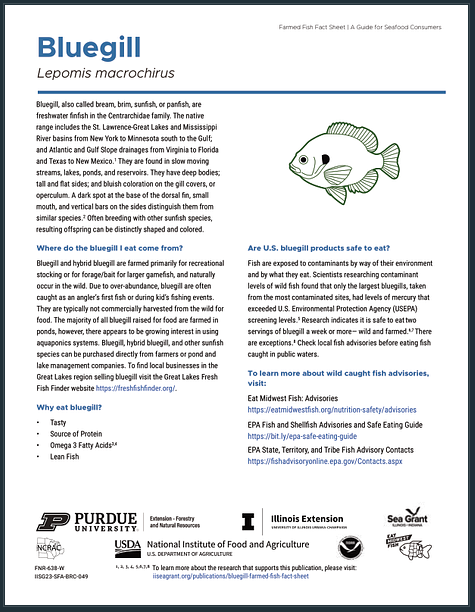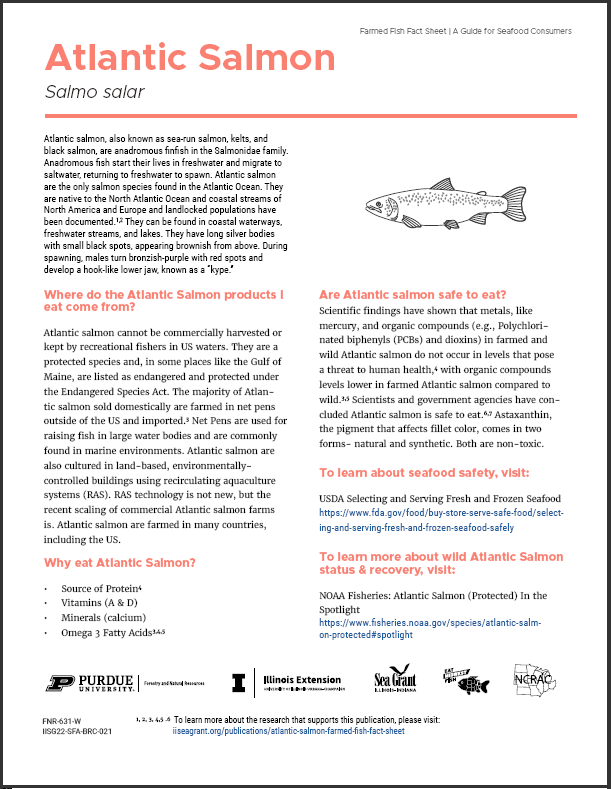
File Size: 1.18 MB
Year: 2022
This is the eighth in a series of consumer guides that describe fish and shellfish farmed in the Midwest region of the United States. (See Walleye Farmed Fish Fact Sheet, Yellow Perch Farmed Fish Fact Sheet, Tilapia Farmed Fish Fact Sheet, Rainbow Trout Farmed Fished Fact Sheet, Pacific White Shrimp Farmed Fish Fact Sheet, American Paddlefish Farmed Fish Fact Sheet, and Channel Catfish Farmed Fish Fact Sheet). The fact sheet also includes culinary characteristics, cooking tips and a recipe for Easy Baked Salmon.
References:
- National Audubon Society. 2002. National Audubon Society Field Guide to Fishes. Chanticleer Press, Inc.
- Fish Watch. U.S. Seafood Facts. Available online: https://www.fishwatch.gov/profiles/atlantic-salmon?_ga=2.87721752.1801739739.1658525024-826017170.1655993192.
- Jensen IJ, Eilertsen KE, Otnæs CHA, Mæhre HK, Elvevoll EO. 2020. “An Update on the Content of Fatty Acids, Dioxins, PCBs and Heavy Metals in Farmed, Escaped and Wild Atlantic Salmon (Salmo salar L.) in Norway.” Foods,19;9(12):1901. Available online: https://www.mdpi.com/2304-8158/9/12/1901.
- Foran, J, Hites, R, Carpneter, D, Hamilton, C, Mathew-Amos, A, and Schwager, S. 2004. “A Survey of Metals in Tissue of Farmed Atlantic and Wild Pacific Salmon.” Environmental Toxicology and Chemistry, Vol 23 (9), pp. 2108–2110.
- Lundebye, A, Lock, E, Rasinger, J, Nøstbakken, O, Hannisdal, R, Karlsbakk, E, Wennevik, V, Madhun, A, Madsen, L, Eide Graff, I, Ørnsrud, R. 2017. “Lower levels of Persistent Organic Pollutants, metals and the marine omega 3-fatty acid DHA in farmed compared to wild Atlantic salmon (Salmo salar).” Environmental Research, Vol 155: 49-59. Available online: https://doi.org/10.1016/j.envres.2017.01.026.
- EPA-FDA Advice about Eating Fish and Shellfish: For Those Who Might Become Pregnant, Are Pregnant, Are Breastfeeding, and for Children. Available online: https://www.epa.gov/fish-tech/epa-fda-advice-about-eating-fish-and-shellfish.
- Fish for Your Health Wallet Card. 2020. Available online: https://www.purdue.edu/hhs/nutr/fish4health/Walletcard/walletCard.html.

